Winter Birding 6 – Raptors and more
After a few very mild days, we now have snow and freezing rain. The mild weather encouraged a few spring blossoms in the gardens at Eldon House. They are now buried under ice and snow.
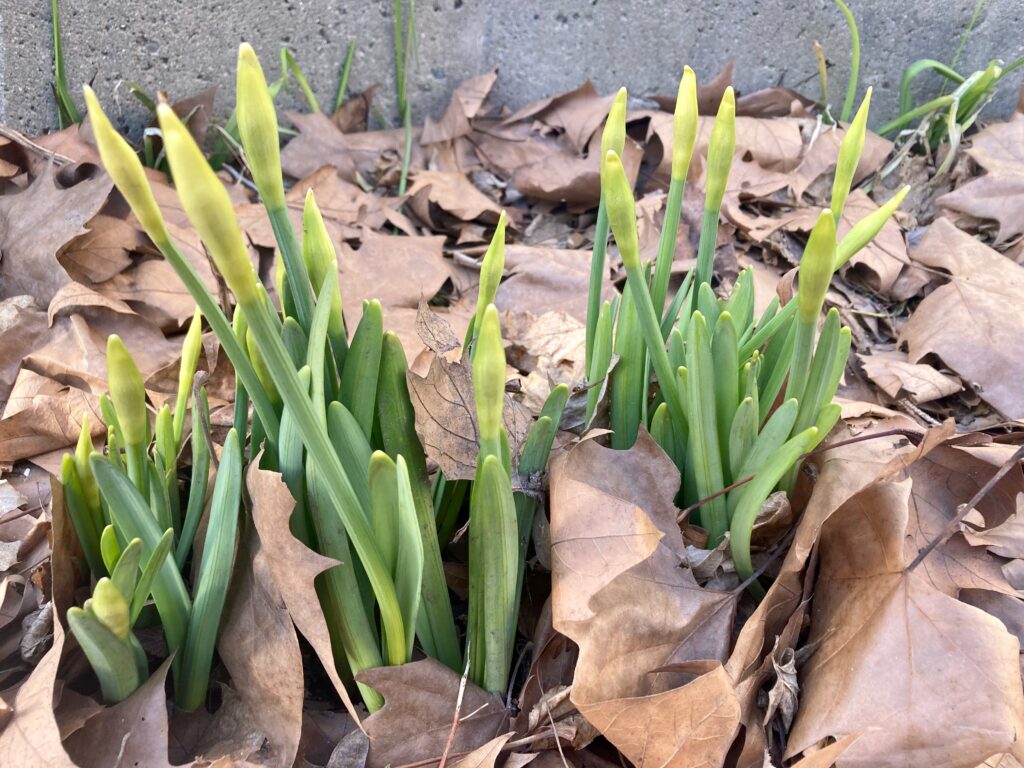
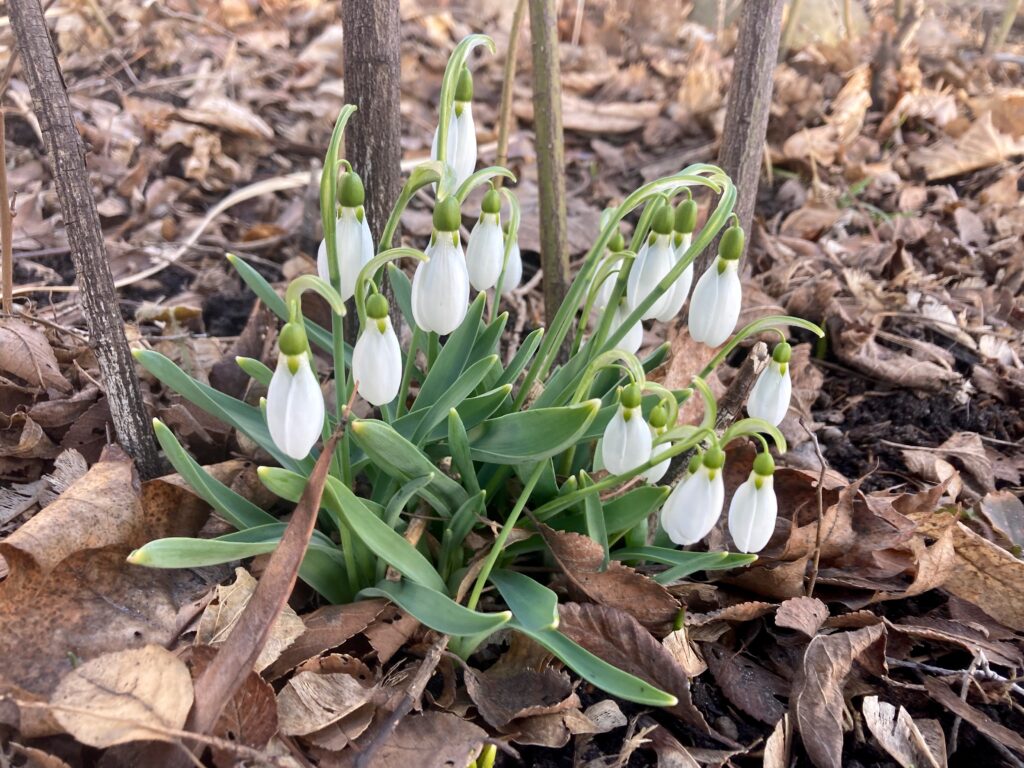
In reviewing our winter photos, we realized that we had missed a few birds that should have been included in earlier posts.
First, along the rivers, as long as there is open water, we sometimes find a hardy Great Blue Heron. Whereas most herons will migrate farther south for the winter, a few elect to stay through the winter.
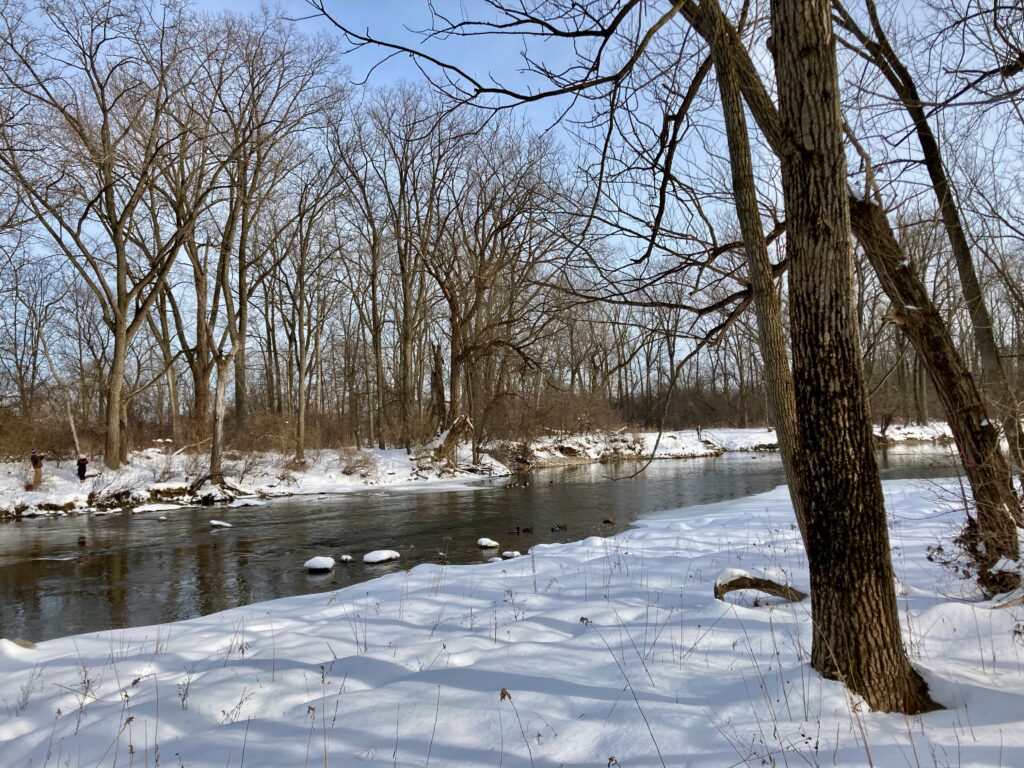

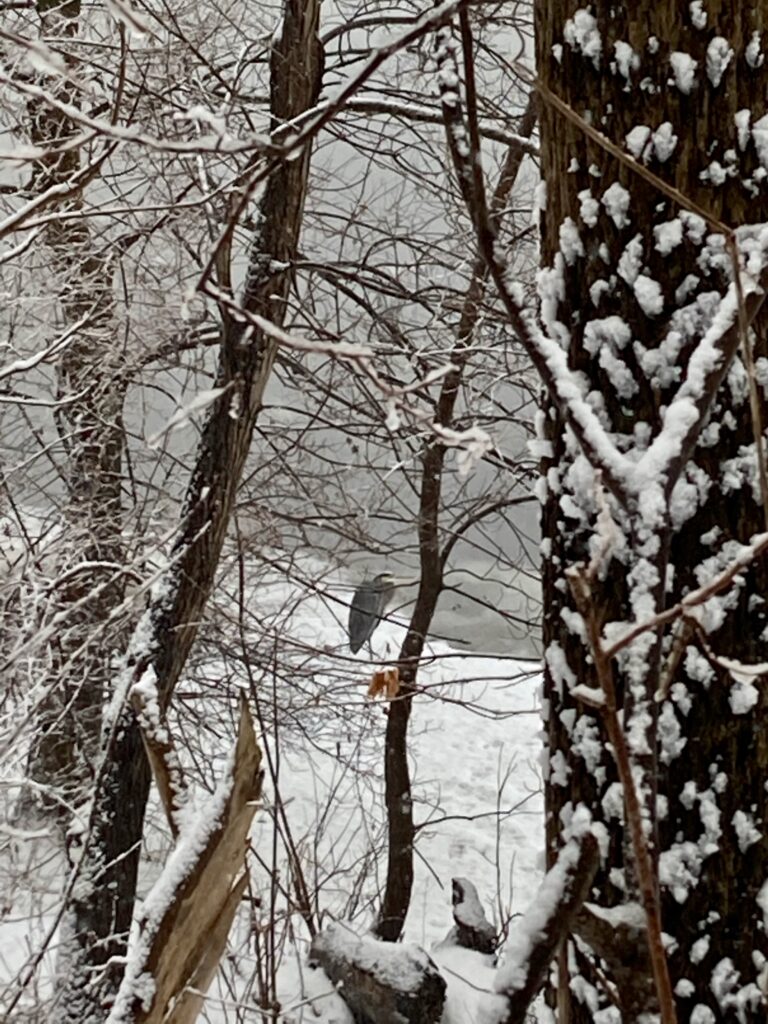

The other birds we often see in winter, especially along rural roads in southwestern Ontario, are Snow Buntings. These birds breed in the arctic tundra, but spend the winter farther south where they can forage in open fields, croplands with grain stubble, shorelines, and roadsides.
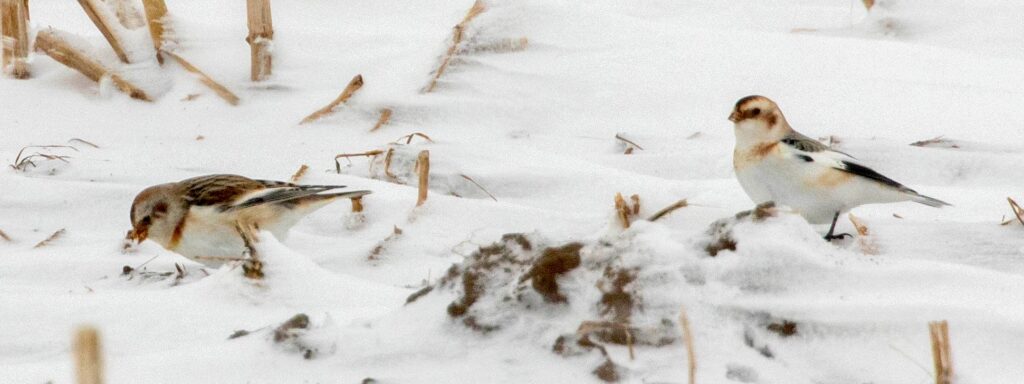
Horned Larks breed in the north, but also may be also found year round throughout the USA and in southern Ontario and parts of eastern Canada. They are short-distance migrants that can be found on prairies, deserts, tundra, beaches, dunes, heavily grazed pastures, and areas cleared by humans, such as plowed fields and mowed expanses around airstrips.

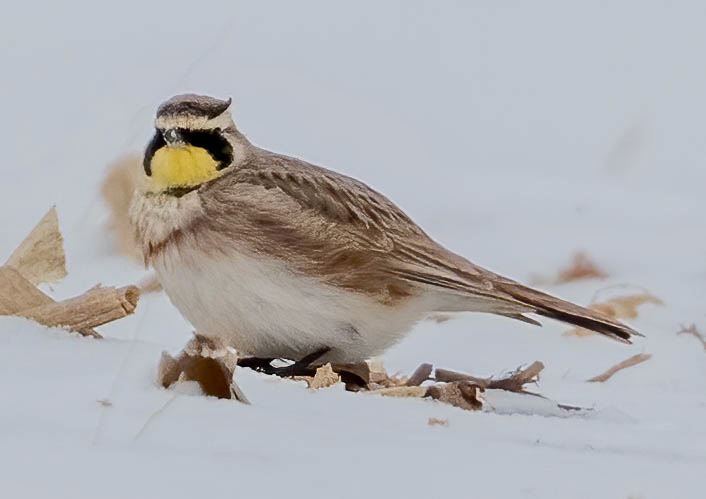
The open fields is also where we have spotted different raptors surveying the ground for rodents or other prey.
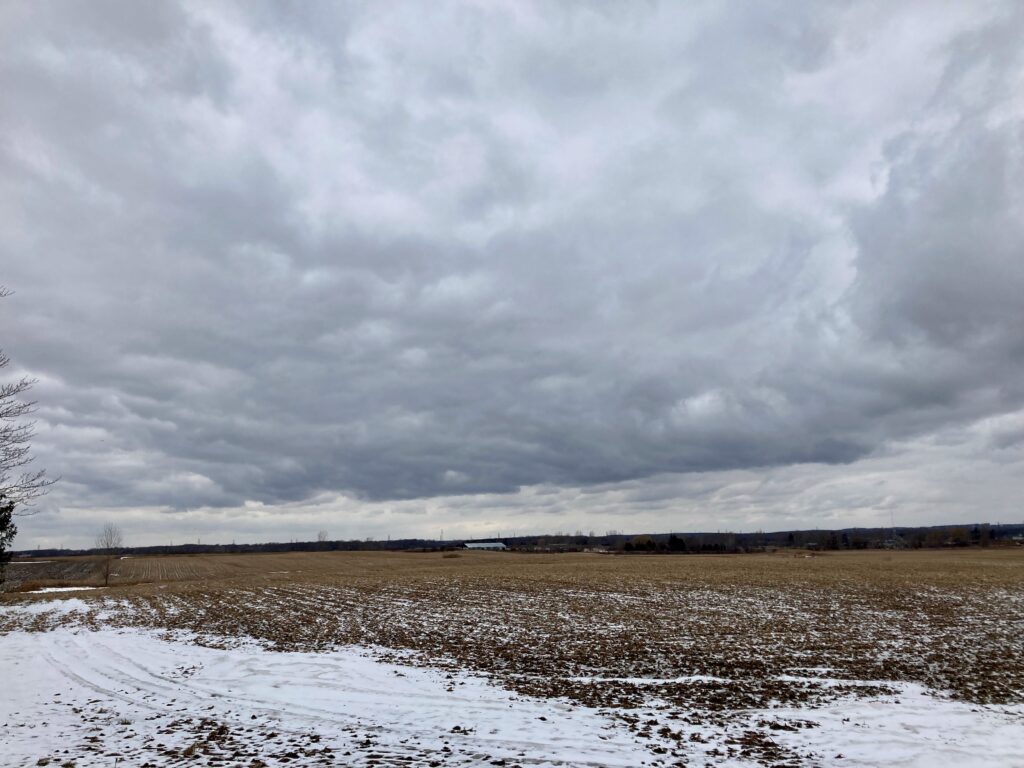
Red-tailed Hawks may be short-distance migrants or year-round residents. Those that breed across the Canadian provinces and into Alaska spend the winter months farther south, throughout the continental US and southern Ontario near Lake Ontario and Lake Erie where they join resident hawks.
Red-tailed Hawks come in many colour forms. Juveniles have striped tails before developing the breed’s signature russet tail.
These hawks often perch motionless in trees, surveying for prey.
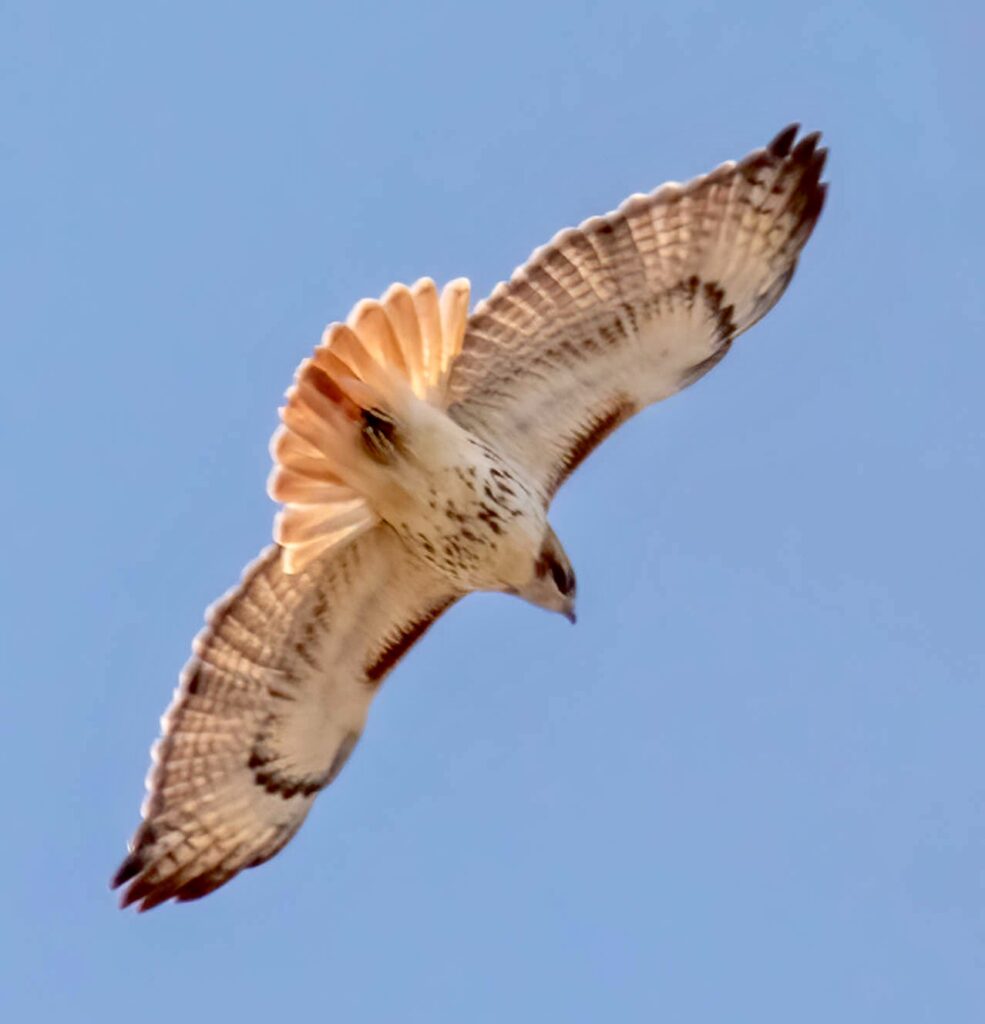




Northern Harriers are often seen flying low over open fields. They have an owl-like face that allows them to detect prey by ear. Also characteristic of Northern Harriers is the white rump patch on both males and females.
Harriers breed across the Canadian provinces and Alaska, but can be found year round in southwestern Ontario and the middle of the USA. Their diet consists of mammals, reptiles, amphibians, and birds.
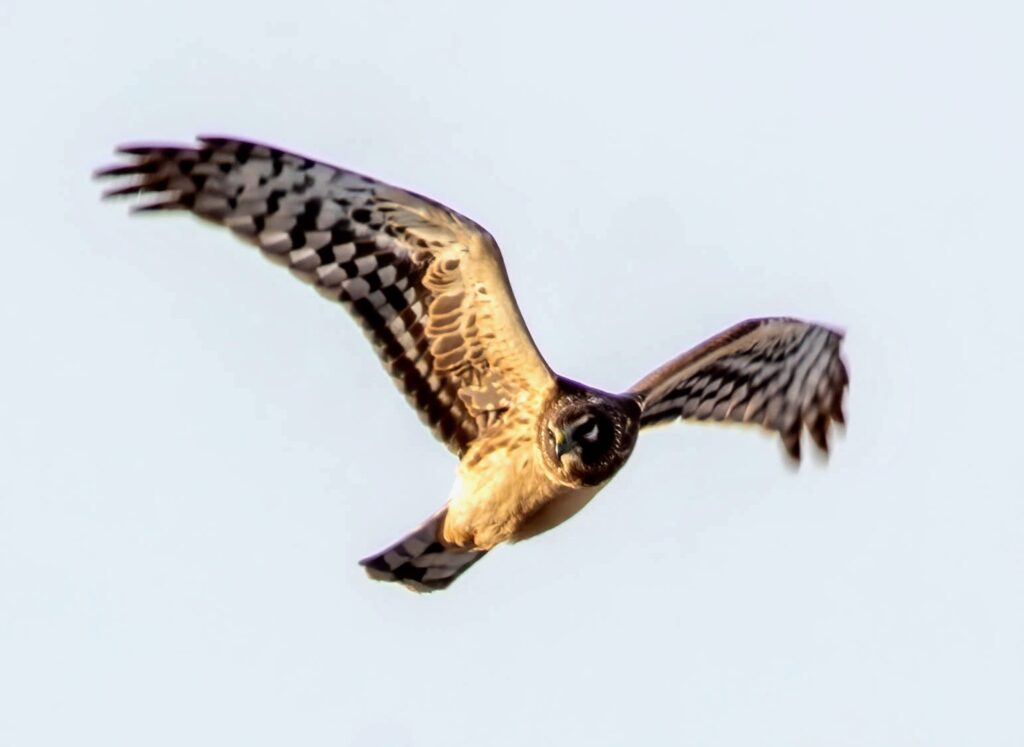
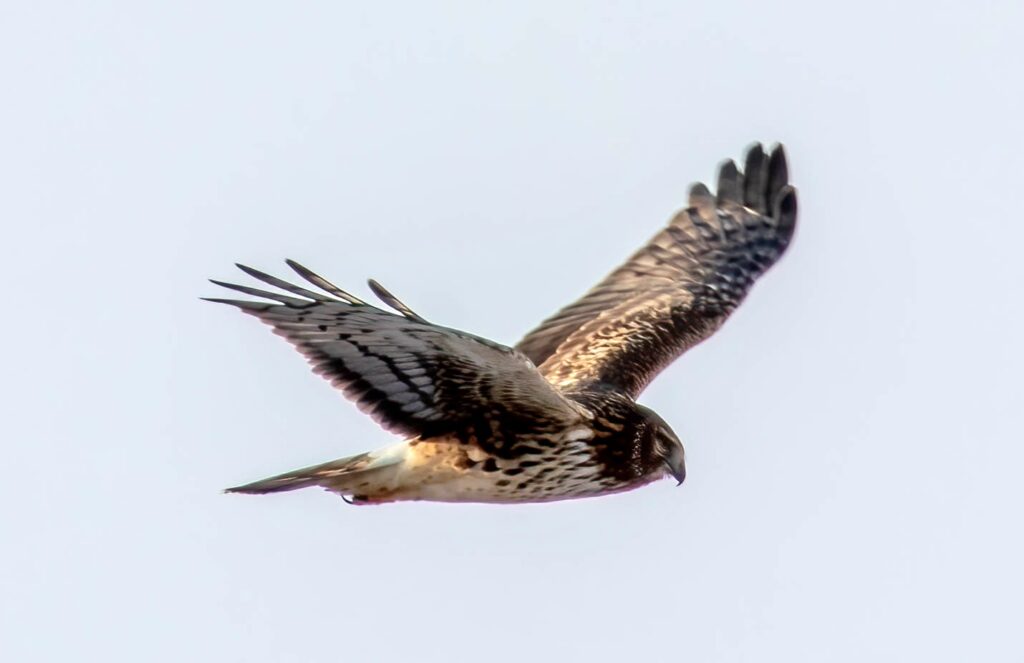
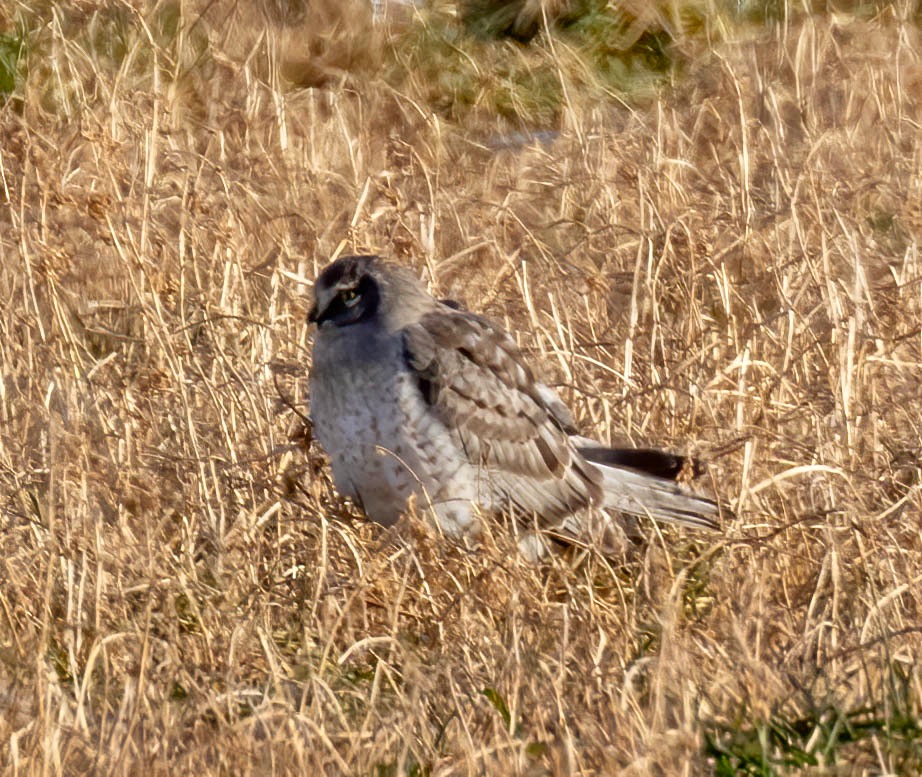
We have come across some of the smaller raptors in winter from time to time.
Some Peregrine Falcons nest in the tundra of the high north and migrate to South America for the winter. Resident populations are found in a few places in North America, including southern Ontario.
Peregrines nest on cliffs, but have adapted to nesting on the ledges of tall buildings in cities where they find abundant prey among the Rock Pigeon population. In Toronto, a dedicated group of volunteers monitors Peregrines that nest on high office towers. When nestlings first fledge, volunteers often have to retrieve the young birds from the ground or lower perches because they cannot yet fly well enough to return to their nests unaided or hunt for themselves. This also provides an opportunity to band the young birds for future identification. Below is one of the Peregrines, identifiable by those in the know by its coloured and numbered leg bands.

Merlins breed across the Canadian provinces and in Alaska and move to the southern and central U.S., northern Mexico, and as far south as Ecuador in the winter. There are resident populations along the northwest coast of Canada. Perhaps the Merlin we saw successfully hunting on an early March day in 2022 was an early migrant.
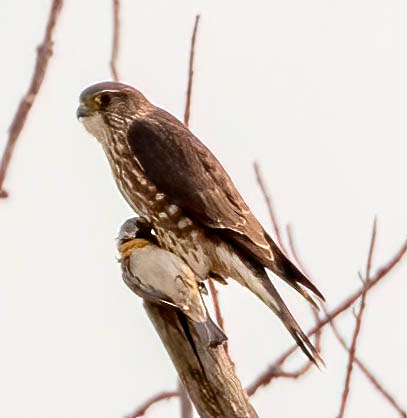
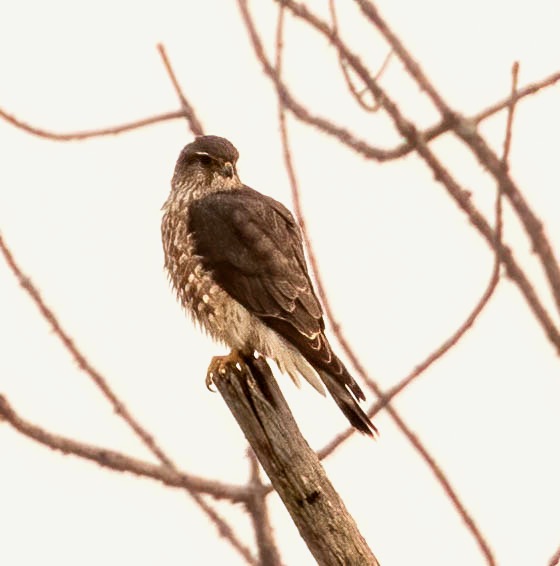
Rough-legged Hawks spend the summer on the arctic tundra capturing lemmings. They migrate to southern Canada and the U.S., where they perch surveying a marsh or pasture for small rodents.
Rough-legged Hawks are one of only 3 North American raptors with legs feathered all the way to its toes.
We spotted this Rough-legged Hawk in January, 2022, overlooking open fields in southwestern Ontario.

Cornell’s All About Birds website describes Bald Eagles as having, “Complex migration patterns that depend on age, breeding location, and food availability.” Bald Eagles tend to breed across northern Canada and Alaska and migrate farther south and to coastal areas to find open water. Some locations, including southwestern Ontario have year-round populations of Bald Eagles. Eagles can be found along the Thames River system in London Ontario at any time of year. They nest in trees except in regions where only cliff faces or ground sites are available
Bald Eagles take 4 to 5 years to attain adult plumage.
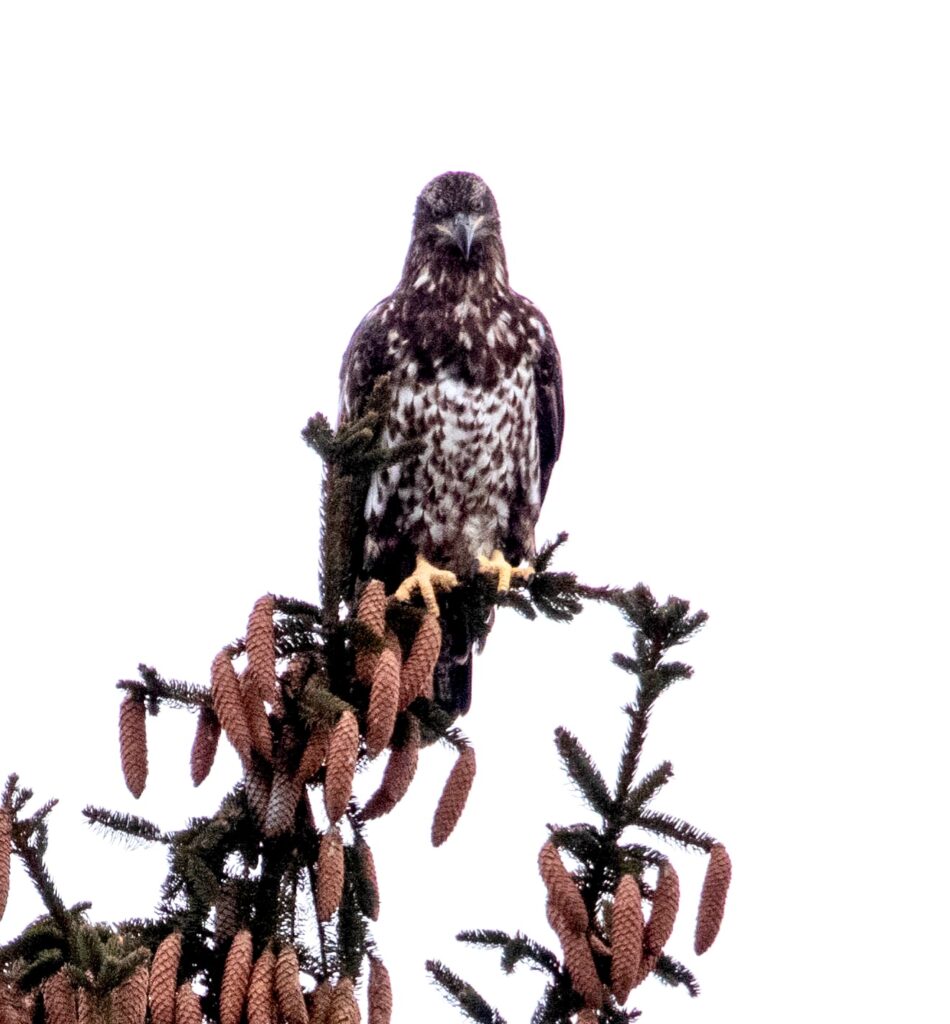

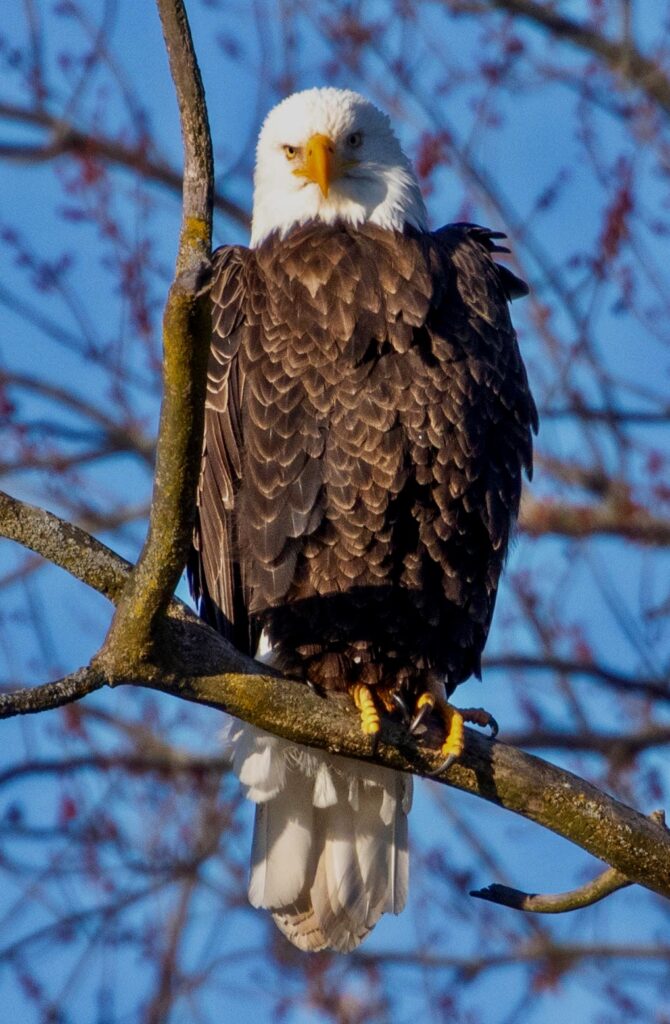

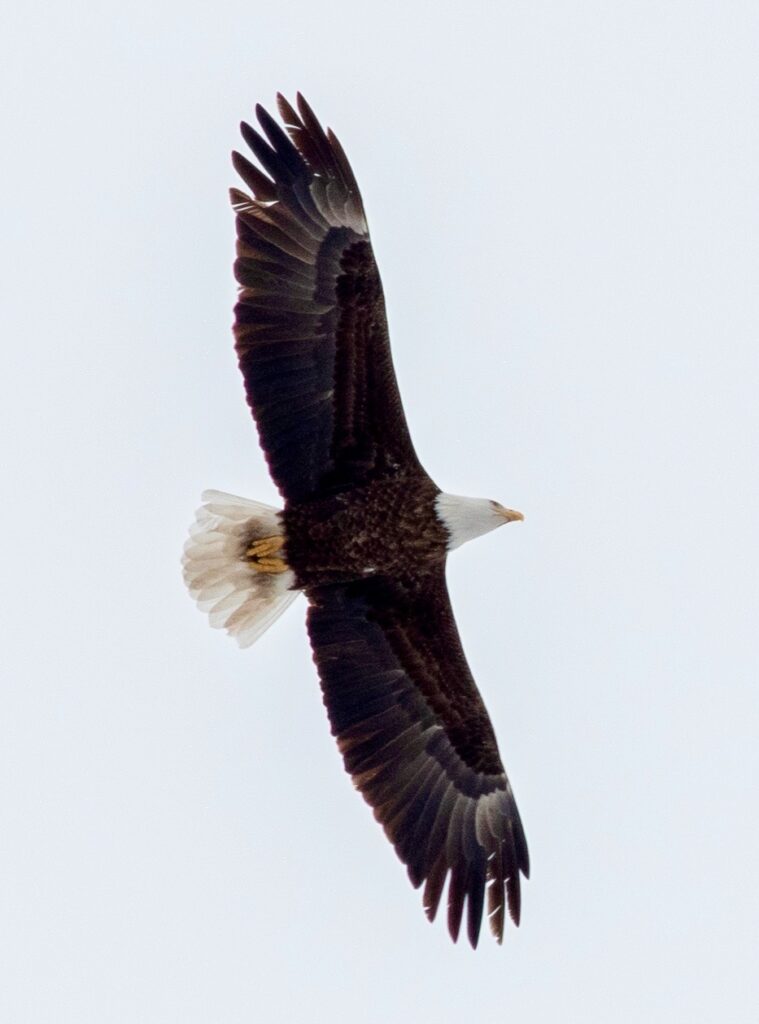

Owls are included in the category of raptors. All raptors have a hooked beak, strong feet with sharp talons, keen eyesight, and a carnivorous diet.
Great Horned Owls are one of the most common owls in North America. They are found throughout Canada, the US, Mexico, Central America and parts of South America year round. Great Horned Owls have a diverse diet that includes mammals and birds of various sizes. They are typically nocturnal hunters.
Great Horned Owls nest in trees, but also also use cavities in live trees, dead snags, deserted buildings, cliff ledges, and human-made platforms. They begin mating early in the new year. In High Park in Toronto, mating duets could be heard around dusk in January. In London, there are several pairs that nest in the local parks.



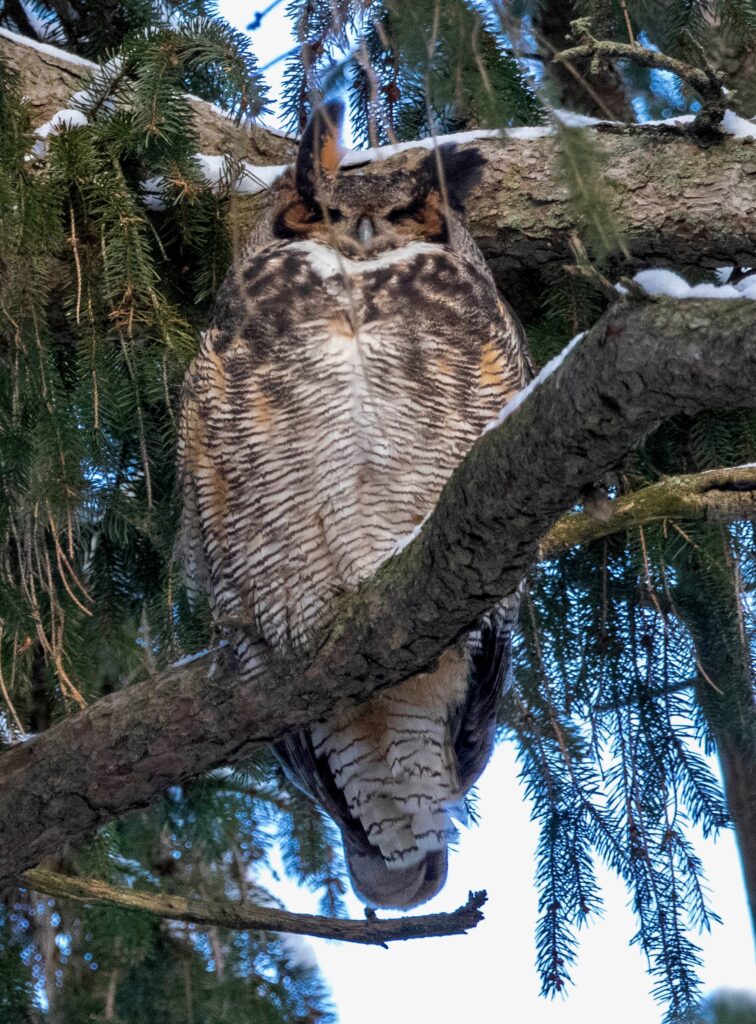


We couldn’t resist adding this:

Fabulous Short Bird Videos
Here are 12 of the best videos from the Audubon Photography Awards: https://tinyurl.com/3m7w2dx4
Music Videos
Sina has several videos where she replaces the drummer on a song. The drum sticks are a blur at times.
More Sina just because